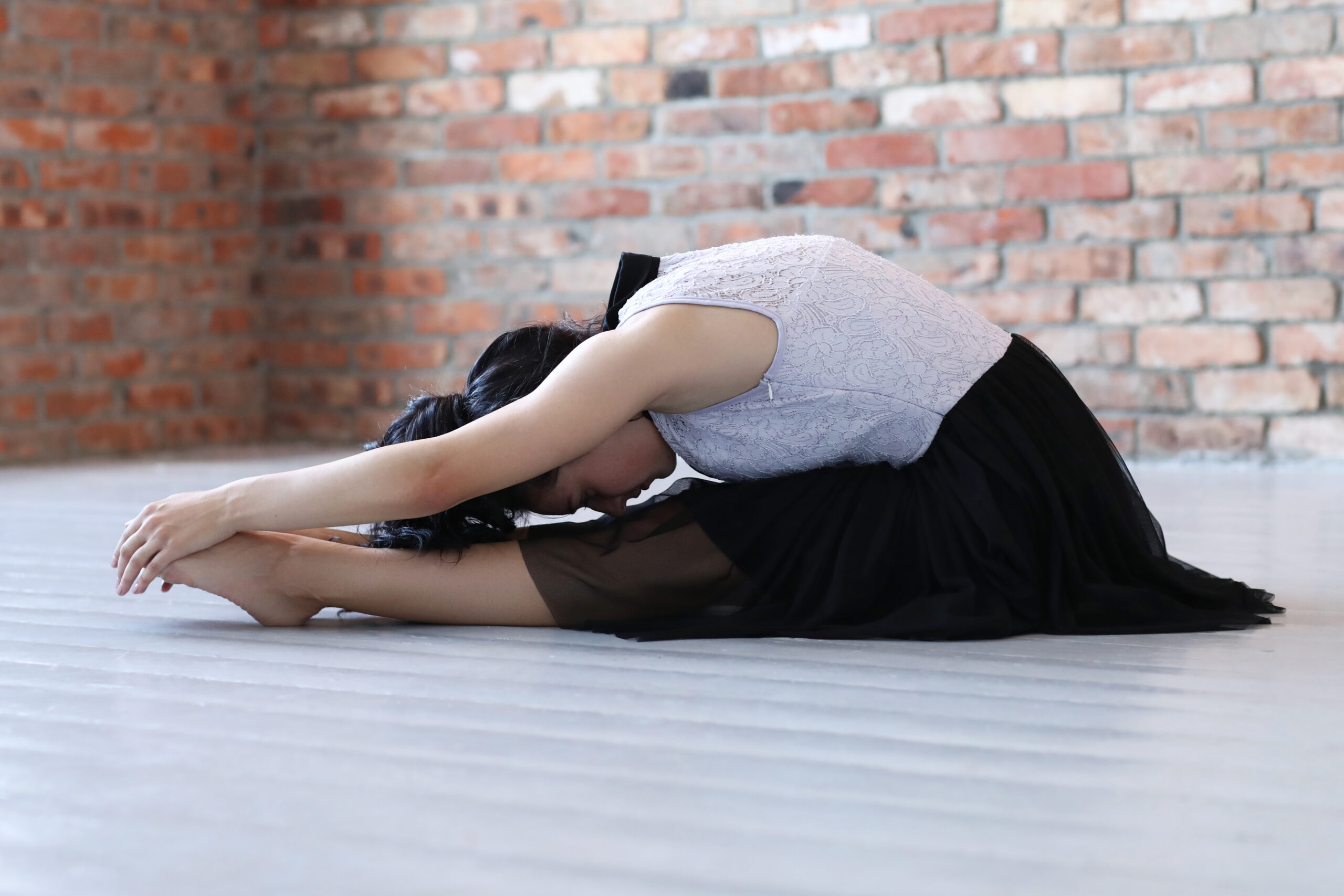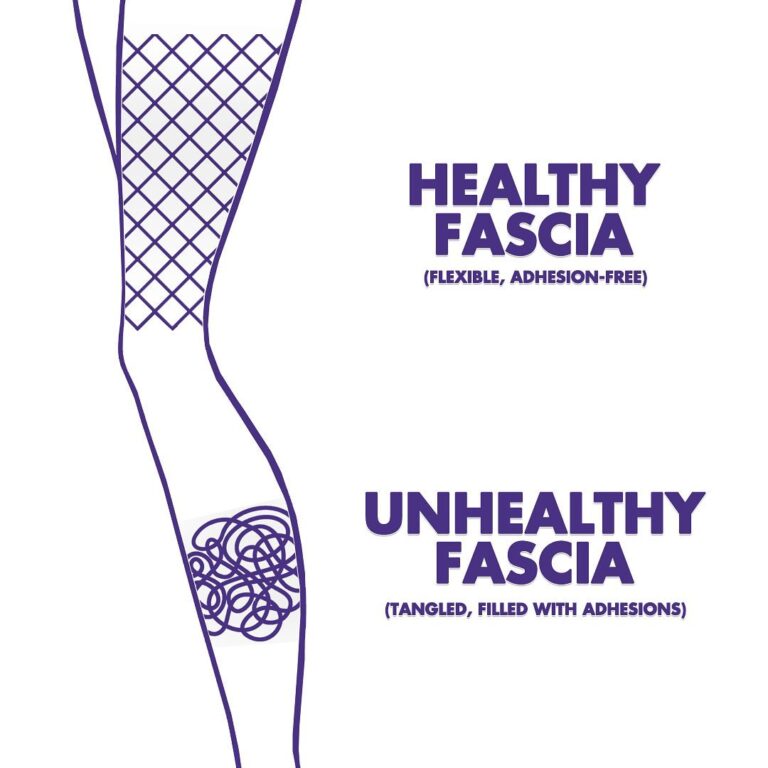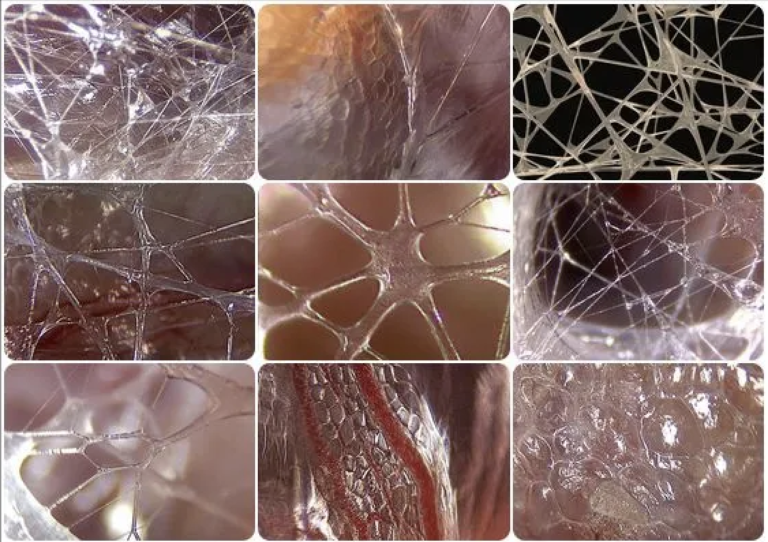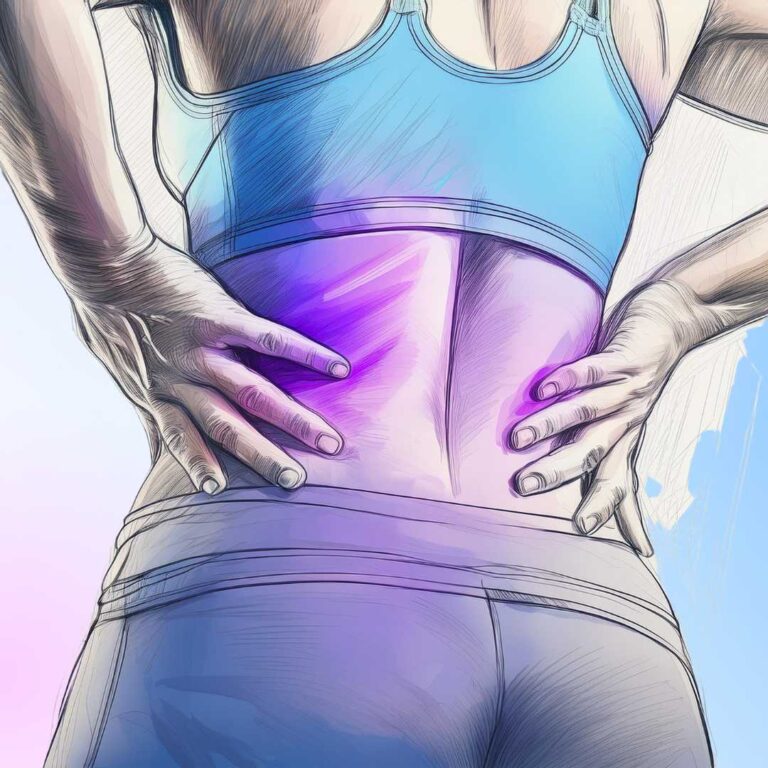Fascia Stretche Secrets for Tight Hamstring & Flexibility: Reduce Pain & Stiffness!
Do you have tight hamstrings? Who doesn’t?! Whether you spend hours behind a desk or in the car, or consider yourself very active – tight hamstrings affect us all.
What you may not know is this: our hamstrings have some of the most dense fascia in our bodies, making them stiff and creating imbalances in our bodies.
When restricted with dense fascia, these powerful muscles – crucial for running, jumping, and just daily movement – become stiff creating imbalances in our bodies.
So we know we need to stretch the hamstrings! But do you know how to properly stretch the hamstrings?
Do you think this photo is the mark of healthy, flexible hamstrings?
This photo is showing the lengthen-ibility of the hamstrings, not flexibility. True flexibility of a muscle is its ability to shorten, rotate, and also lengthen.
When we stretch our hamstrings in this traditional way, we are actually creating more dense fascia. How? By overstretching and going into end ranges without resistance. Overstretching creates little micro tears in the myofascial tissue, and the body repairs with little bandaids called scar tissue, aka dense fascia. More on this in an upcoming post!
So how do we stretch our hamstrings properly? First, let’s talk a bit about hamstring anatomy.
Deeper Than Muscle: Fascia Stretches for Total Hamstring Release
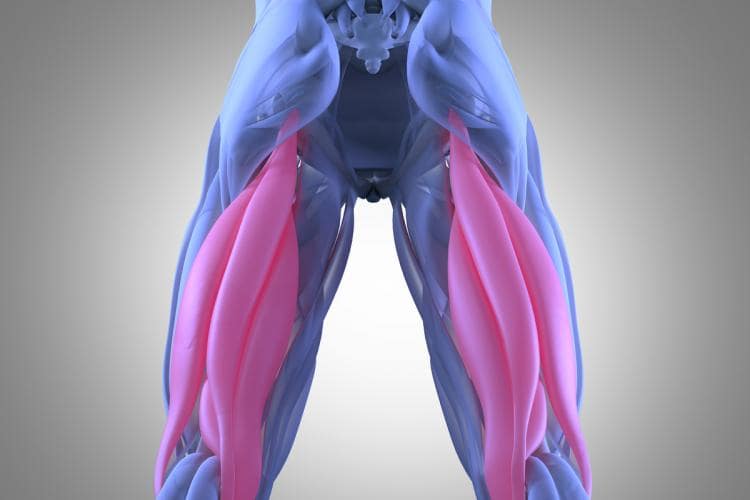
We have 3 hamstring muscles, all three cross two joints, attaching to the pelvis and lower leg:
- Lateral Hamstring (outside back of leg) – anatomical term is “biceps femoris”.
- Central Hamstring (centre back of leg) – anatomical term is “semitendinosus”.
- Medial Hamstring (inside back of leg) – anatomical term is “semimembranosus”.
But why the focus on the hamstrings? Why are they so important?
Why are the hamstrings so important to stretch?
Hamstring flexibility is about more than touching your toes. Here’s why hamstring health is so important:
- Function: The hamstrings cross two joints in the body. They attach to the pelvis and also below the knee. Consequently, they have a huge impact on the health of our knees, ankles and feet, hips, spine, and even shoulders. Dense fascia in the hamstrings equals a reduced range of motion in major joints.
- Fascia Density: Because the hamstrings have a lot of volume, and are on the back of the body, they tend to hold the greatest amount of dense fascia in our bodies. Again, dense fascia in the hamstrings means reduced range of motion, and often pain in the knees, hips, back, and more.
- Lifestyle Factors: Most of us spend a lot of time sitting at a desk or driving for work. These lifestyle factors cause the hamstrings to become ‘stuck’ from repetitive positioning and don’t move well. Stuck connective tissue is dense fascia, and as you have now learned – dense fascia in the hamstrings creates problems in the knees, hips, back and more.
- Posture: When your hamstrings are restricted with dense fascia, they pull your pelvis out of alignment. The pelvis sets up the spine and shoulders, so dense hamstring fascia leads to poor posture and anatomical misalignments.
- Injuries: Know anyone with plantar fasciitis or back pain? How about knee pain or an ACL injury? Dense hamstring fascia is the root cause of these problems.
So how do we keep our hamstrings moving freely and in a healthy condition?
Fascia FLO: The Secret Weapon for Hamstring Flexibility
Creating true hamstring flexibility is foundational to having a body that moves better from head to toe.
Unlike traditional muscle stretching, which only lengthens the muscle in end-range, fascia flo creates true flexibility for the hamstrings (and all the major muscles). This specific formula not only brings true flexibility, it also keeps the fascia healthy.
Fascia is a web-like connective tissue found everywhere in our bodies. When fascia gets restricted or densified, it limits the mobility of our muscles, and creates overworking joints which leads to pain.
When the fascia of our hamstrings is dense or “stuck”, these are common problems:
- Knee pain & injuries
- Hip Pain & injuries
- Plantar Fasciitis
- Stiffness in Calves
- ACL injuries
- Low Back Pain
- Spine & Disc Degeneration
- Osteoporosis
- Foot and Ankle Pain & Injuries
- Bunions
Fascia flo offers the formula to remove dense fascia in the hamstrings. This will bring back mobility to the joints, reducing (even removing!) pain and stiffness – especially in the knees, hips, and lower back.
Ready to Stretch Your Fascia? Enter Fascia FLO for Hamstring Flexibility
Here are two fascia flo hamstring videos. These are included in the , but I’m offering them for you today!
This first video is short, giving you an introductory class on the three hamstrings and a fascia flo version for each. Note that while we are working on our knees here, we have other hamstring fascia flo moves that are knee-friendly!
Follow along the video below and get ready to workout those tight Hamstrings
This next video is a more extensive class where we go deep into hamstring fascia flo moves. Once you feel comfortable with the , give this class a try! I’m excited to hear how you feel after this full session.
Remember: Consistency is key! Aim for 5-10 minutes of fascia flo stretching for your hamstrings several times a week – daily is even better! As your flexibility improves, you can gradually increase the intensity and duration of your stretches.
By prioritizing regular fascia flo stretching techniques, particularly for your hamstrings, you can unlock a world of increased flexibility, improved performance, and reduced pain. So, ditch the tightness and embrace the fascia fix for a healthier, pain-free you!
Feel free to reach out with any questions, I’d love to hear from you!
x Dreena


